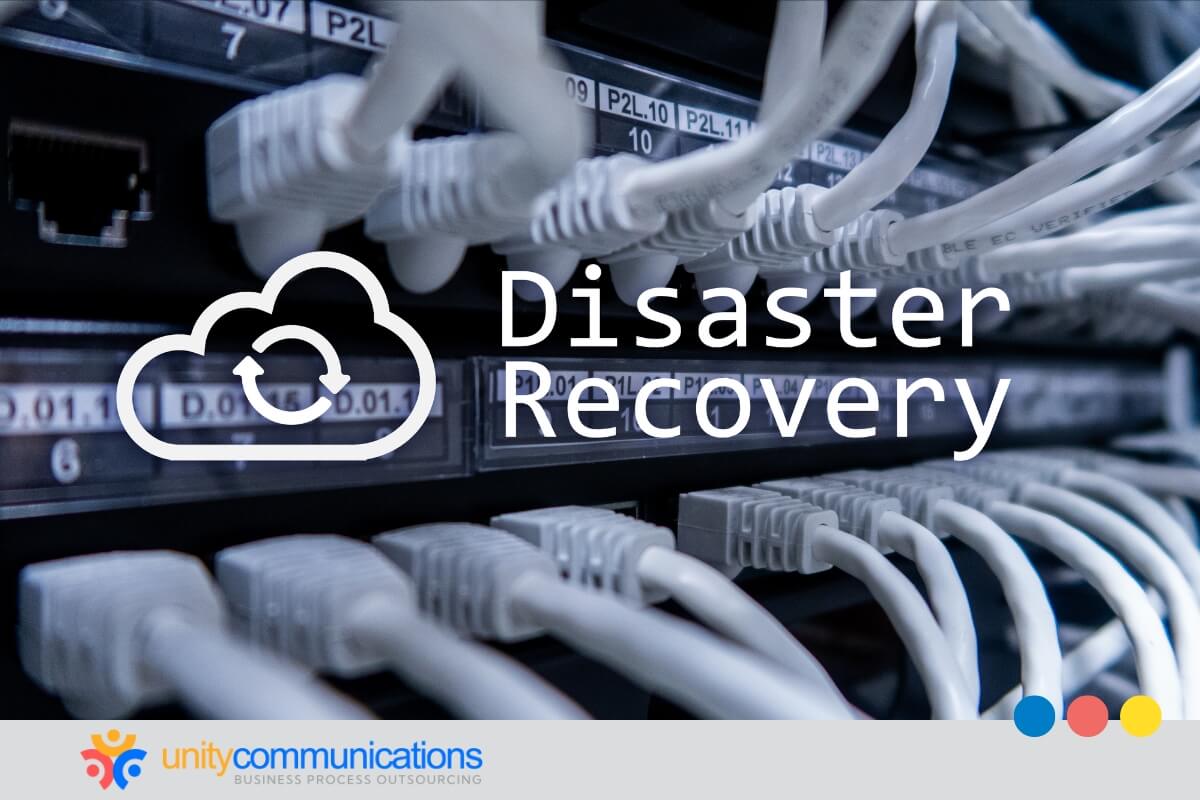Table of Contents
Many businesses are adopting multi-vendor business process outsourcing (BPO) to stay agile and competitive with their IT services. They can tap into specialized expertise, avoid vendor lock-in, and tailor solutions to their operational needs.
The approach also strengthens disaster recovery (DR). Distributing critical IT functions across multiple providers reduces the risk of a single failure point and accelerates crisis response.
This article explores the primary drivers behind the shift to multi-vendor outsourcing for IT services. It highlights the benefits, potential risks, and how businesses can manage complexity while maximizing performance and continuity. Read below to learn more.
Top benefits of multi-vendor IT outsourcing for modern enterprises

As the digital landscape evolves, organizations shift from a traditional to a multi-vendor outsourcing model for their IT services. Delegating crucial IT functions across several specialized providers promotes more flexibility, control, and value.
The following further explains the approach’s benefits:
1. Access best-of-breed providers
Multi-vendor outsourcing can offer your business specialized support for cloud, cybersecurity, and development functions. With only 5% of executives strongly agreeing that their organization invests enough in upskilling, outsourcing helps bridge critical skill gaps.
Working with niche providers means you can access deep technical expertise that would otherwise take years to build internally. Dedicated teams manage each IT function, strengthening operational excellence.
2. Avoid vendor lock-in
Working with a single provider can lead to long-term dependence, so switching to other vendors is challenging without incurring high costs or service disruption.
Multi-vendor outsourcing reduces this risk by promoting greater autonomy and flexibility when negotiating contracts or updating technologies. Without overhauling systems, you can replace or reassign BPO partners based on performance, innovation, or budget.
3. Enhance innovation and agility
Multiple vendors help you stay competitive and even lead the market through their fresh perspectives and emerging technologies. Without increasing tech spending, you can use cutting-edge trends, such as artificial intelligence, automation, and blockchain.
Diverse teams also foster a culture of experimentation and rapid development. You can pilot new tools and pivot quickly as consumer behavior and markets change.
4. Optimize costs
Multi-vendor outsourcing for IT services lets you find the best deals for each part of your system instead of paying for a one-size-fits-all service. You can maximize your budget by combining premium and affordable providers without compromising performance, and aligning spending with business needs.
Additionally, the ability to benchmark vendors against each other often leads to more favorable contract terms and cost savings over time.
5. Diversify risks
Relying on a single vendor can pose serious operational risks if it experiences downtime, a cyberattack, or financial instability. Multi-vendor outsourcing enhances resilience by spreading critical workloads across different platforms and partners.
If one vendor encounters issues, swiftly shifting functions to other providers can minimize disruptions. This defense strategy supports business continuity, especially in industries where uptime and data security are critical.
Multi-vendor outsourcing for IT services empowers you to build a more resilient, agile, and cost-efficient ecosystem. With these strategies, you can better adapt to rapid technological changes and market demands, improve IT performance, and position your business for sustainable growth.
Disaster recovery in multi-vendor IT environments

A multi-vendor outsourcing strategy isn’t just about spreading workloads. It reinforces disaster recovery. Working with specialized providers across key functions such as cloud infrastructure, data processing, and customer support provides you with diverse streams of DR intelligence to uncover obscure vulnerabilities and build tailored recovery paths.
Each vendor offers perspectives, tools, and protocols for designing DR plans and aligning recovery objectives based on the function’s criticality.
This diversity also expedites and fuels innovation post-disruption. When one system fails, you can plug in new, more advanced solutions from different vendors, reducing the chance of repeat failures. Coordinated drills reveal gaps and foster cross-functional readiness, making disaster recovery a catalyst for more intelligent systems.
According to industry research, downtime can cost up to $49 million in lost revenue, making resilience a strategic investment. With centralized monitoring and automated failover systems, multi-vendor ecosystems provide a more responsive, adaptable, and resilient safety net than a siloed approach.
Common challenges to managing multi-vendor IT outsourcing partnerships
Multi-vendor IT outsourcing offers flexibility and specialization, but it also brings complexity. Below are the most common challenges you might face when aligning multiple vendors under one cohesive strategy:
1. Varying SLAs and communication styles
Vendors operate under different service-level agreements (SLAs) and support models, leading to misaligned expectations. This can cause confusion during outages and hinder timely resolution.
2. Integration across platforms
Disparate technologies and workflows make system integration difficult. Custom workarounds increase complexity, risk, and maintenance overhead.
3. Security and compliance gaps
Vendors might follow different security standards, increasing security vulnerabilities. In regulated industries, inconsistent practices raise the risk of breaches and non-compliance.
4. Lack of unified governance
Decentralized vendor management leads to duplicated efforts, unclear accountability, and limited visibility into overall performance and risks.
5. Inconsistent disaster recovery and continuity
Recovery plans vary across vendors, creating gaps in coordination. Recovery delays and service disruptions are more likely without a unified DR strategy.
While a multi-vendor IT strategy unlocks agility and innovation, it also introduces new layers of operational complexity. From mismatched SLAs to fragmented disaster recovery plans, these challenges can disrupt performance and weaken resilience if left unmanaged.
The good news? With the right strategies, you can turn complexity into control. Let’s explore practical solutions to align your vendor ecosystem and drive long-term success.
Turning best practices into competitive advantage

Effectively managing multiple IT vendors requires more than just signing contracts. It demands a strategic, coordinated approach to governance, accountability, and performance. Without structure, even the most promising partnerships can lead to miscommunication, security gaps, or costly downtime.
To overcome these challenges and unlock the full potential of multi-vendor outsourcing, businesses must implement proven best practices that streamline collaboration and safeguard continuity.
1. Define roles with clear SLAs and responsibility assignment charts
Clear SLAs set measurable expectations for uptime, response, and resolution, helping vendors stay accountable and performance-focused. They create a common baseline for evaluating service quality.
RACI charts further clarify roles by identifying who is responsible, accountable, consulted, and informed. This prevents confusion during incidents and fosters smooth collaboration between internal teams and vendors.
2. Centralize vendor governance
Vendor oversight becomes fragmented without centralized governance, leading to poor visibility and inconsistent processes. Siloed management increases risk and reduces alignment with business goals.
In contrast to what BPO typically consolidates within a single provider, multi-vendor setups require a dedicated governance layer to maintain control. A centralized team standardizes onboarding, enforces contract compliance, and tracks performance across all partners, ensuring accountability and alignment with business objectives.
3. Conduct regular vendor reviews
Routine performance reviews are essential for evaluating vendor reliability. They use metrics such as uptime, resolution time, and satisfaction scores to help surface issues early and reinforce service expectations.
Consistent feedback also encourages a culture of continuous improvement. When vendors know they’re being measured fairly, it builds trust and strengthens the partnership.
4. Perform compliance audits
Each vendor must meet your organization’s security standards. Regular audits verify adherence to policies and frameworks such as the General Data Protection Regulation (GDPR), Health Insurance Portability and Accountability Act of 1996 (HIPAA), and ISO 27001.
Setting a common security standard for all vendors helps prevent vulnerabilities and protect data.
5. Schedule joint training and drills
Even the best recovery plans fail without practice. Joint drills with critical vendors test coordination, response times, and system failovers. These simulations reinforce each vendor’s role in crisis scenarios and build the trust and speed needed to recover quickly from real disruptions.
These aren’t just operational fixes but the building blocks of resilient, high-performing vendor ecosystems. By standardizing governance, aligning expectations, and preparing proactively for disruptions, you lay the groundwork for long-term success.
These best practices turn multi-vendor outsourcing into a strategic advantage that drives efficiency, strengthens partnerships, and supports sustained business growth.
The bottom line
Disruptions are inevitable. But with a coordinated multi-vendor IT outsourcing strategy, you can minimize downtime, maintain trust, and safeguard your competitive edge.
The strategies in this article help you recover quickly and maintain seamless service during a crisis, securing your competitive edge.
Ready to strengthen your multi-vendor IT strategy? Let’s connect today to discover how our tailored solutions can boost resilience, performance, and long-term value.




